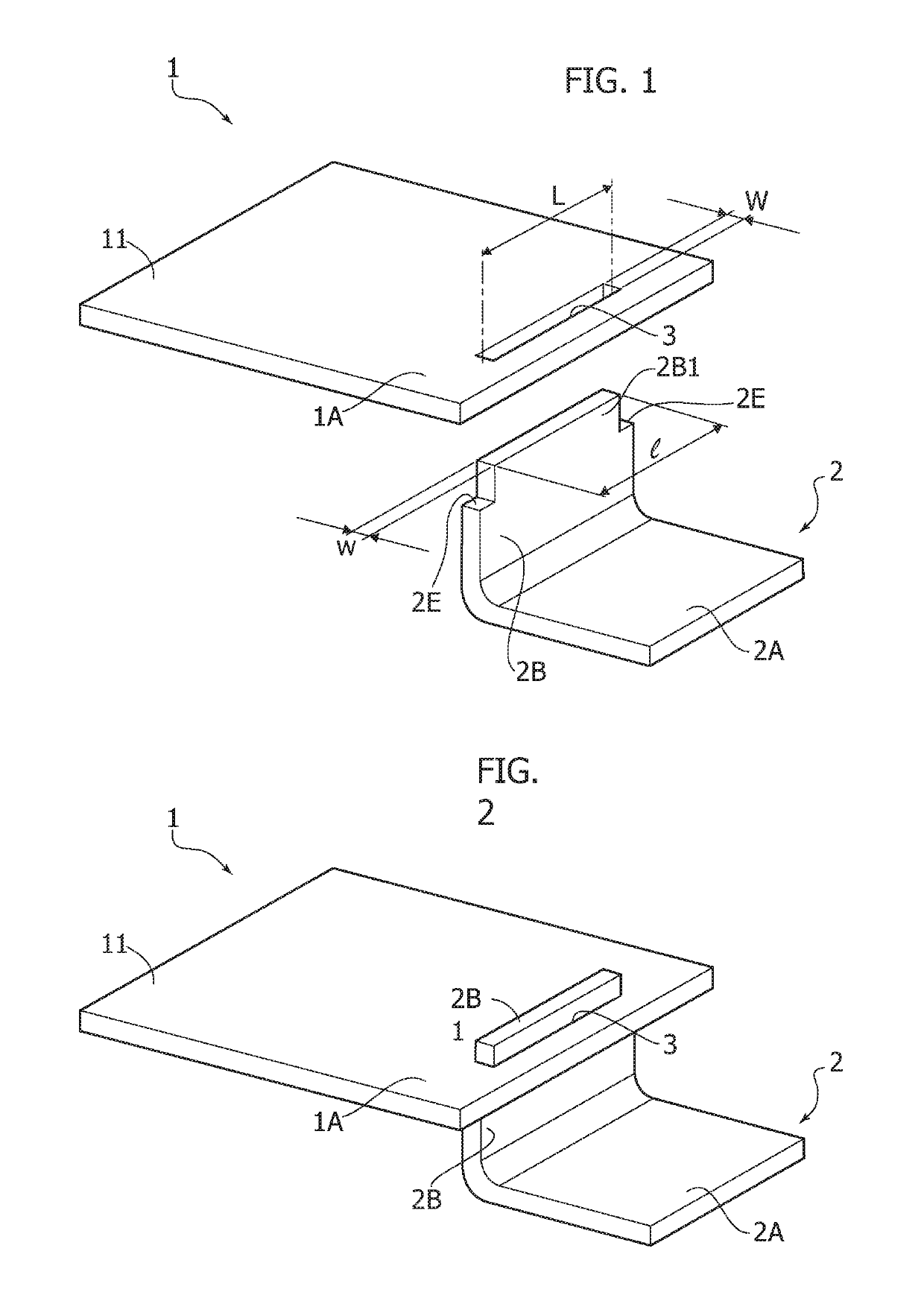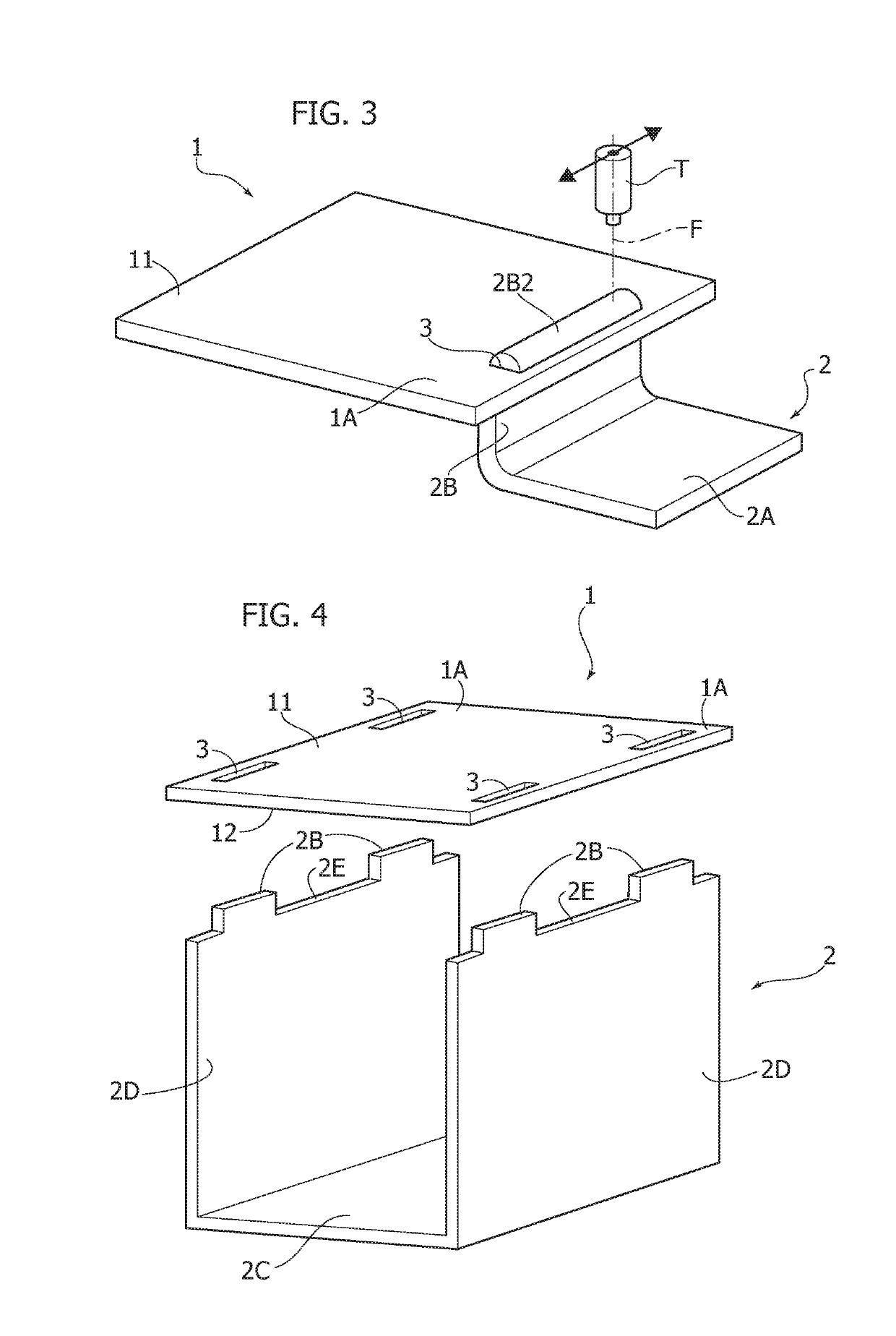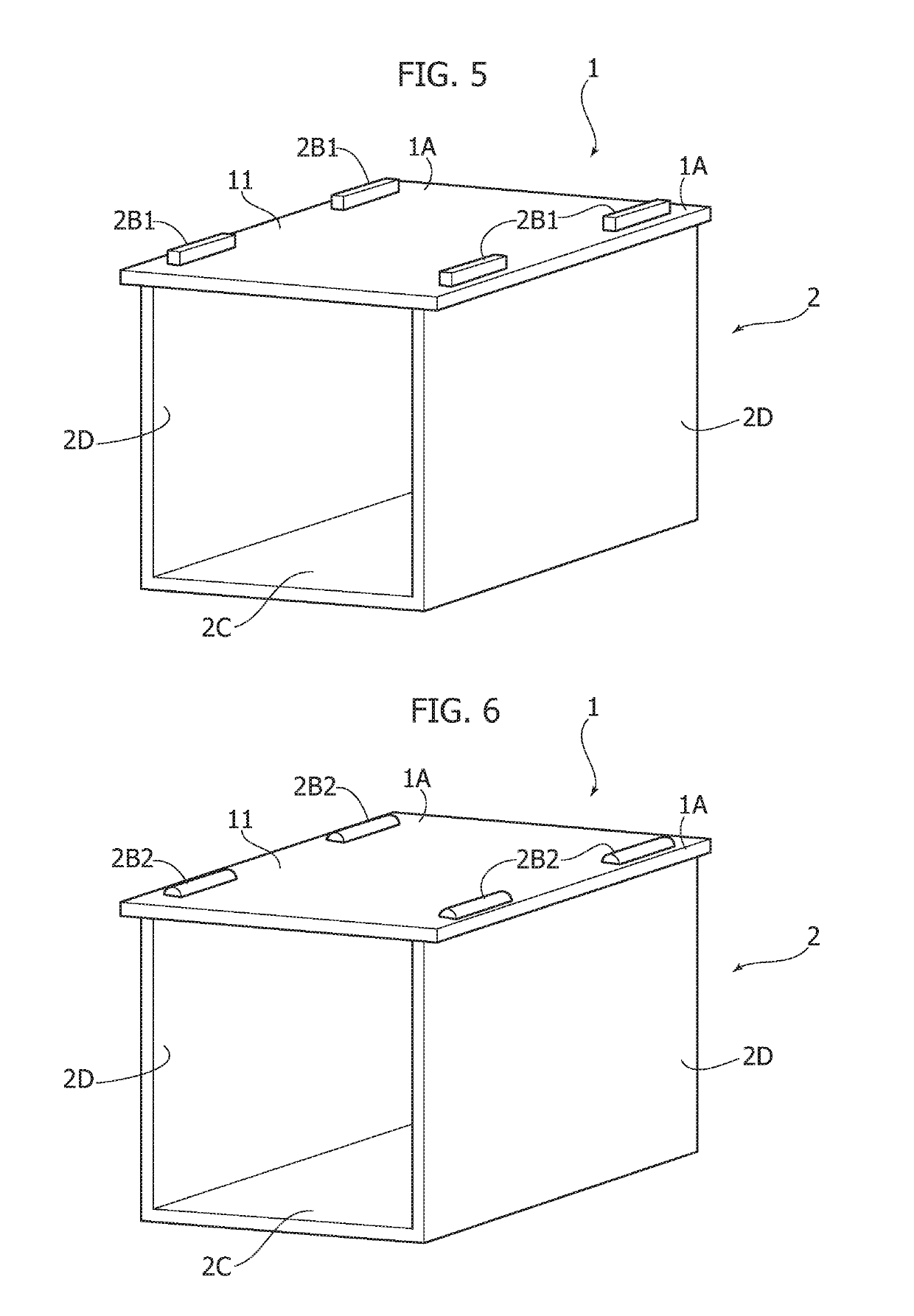Method for joining an element of metal material to an element of plastic material, and a hybrid component obtained by this method
a technology of which is applied in the field of joining metal material and plastic material elements to plastic material elements, can solve problems such as the increase of production times and costs
- Summary
- Abstract
- Description
- Claims
- Application Information
AI Technical Summary
Benefits of technology
Problems solved by technology
Method used
Image
Examples
Embodiment Construction
[0017]With reference to FIG. 1, numeral 1 indicates—in its entirety—an element in the form of a flat panel, made of plastic material, in particular composite material, including a synthetic resin reinforced with fibers, for example glass fibers, carbon fibers or polyamide fibers. The reference number 2 indicates—in its entirety—an element of metal material, for example, of steel or aluminum, which in the illustrated case is in the form of an angular element with a main portion 2A and a portion 2B constituting a substantially perpendicular tab with respect to the portion 2A and ending with an end portion 2B1, having a width “l” less than the width of the portions 2A, 2B.
[0018]Of course the specific configuration of the elements 1, 2 illustrated in FIG. 1 is provided purely by way of non-limiting example. It is evident that there can be any configuration of each of these elements.
[0019]In the illustrated example, the element of plastic material 1 includes at least one substantially fl...
PUM
| Property | Measurement | Unit |
|---|---|---|
| width | aaaaa | aaaaa |
| length | aaaaa | aaaaa |
| weight | aaaaa | aaaaa |
Abstract
Description
Claims
Application Information
 Login to View More
Login to View More - R&D
- Intellectual Property
- Life Sciences
- Materials
- Tech Scout
- Unparalleled Data Quality
- Higher Quality Content
- 60% Fewer Hallucinations
Browse by: Latest US Patents, China's latest patents, Technical Efficacy Thesaurus, Application Domain, Technology Topic, Popular Technical Reports.
© 2025 PatSnap. All rights reserved.Legal|Privacy policy|Modern Slavery Act Transparency Statement|Sitemap|About US| Contact US: help@patsnap.com



